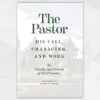How To Plan A Sunday Morning Service . . . Outside
For more resources related to COVID-19, visit our new site: COVID-19 & The Church.
* * * * *
In recent days, Christians have longed not for the return to a sacred space, but the return to a sacred assembly. We long to assemble with our church family and worship God together on the Lord’s Day (Heb. 10:24–25).
In my state (North Carolina), our governor recently gave orders for Phase One of reopening. This allowed for outdoor worship services on the condition that all people remained socially distanced.
Our elders decided to move forward with an outdoor gathering on the first Sunday we were allowed. Obviously, we didn’t know how to do this at first. But the Lord gave us wisdom along the way. If you are planning an outdoor gathering, here are ten things to consider.
1. Prepare now.
We were able to quickly decide to conduct an outdoor service because we had already thought through this option weeks before it was announced. We had already compared an outdoor service to an indoor service, and we realized an outdoor service had several advantages. First and foremost, it didn’t restrict our capacity, so we could maintain one assembly. Furthermore, an outdoor service didn’t require cleaning surfaces; it didn’t require our members to avoid each other in otherwise constrained indoor spaces (hallways, staircases, aisles, etc.).
We considered the basics of what it would take to have church out doors and began purchasing additional audio equipment we needed. (For an exhaustive and quite technical list of everything we purchased to be able to pull this off, click here. If you have questions about any of this, feel free to email James at the address listed.)
2. Think through every way you can make the service “no contact.”
Our state required social distancing at all times, and we happily complied. To do so, we had to consider how to minimize any and all contact.
From the time our people arrived in the parking lot until the time they left, we wanted to plan for there to be no contact with people outside of their household—as well as any surfaces or materials. So we asked everyone to bring their own chairs. We emailed the bulletins with song lyrics; some printed them at home, while others followed along on their phone. We also purchased a text messaging service that enabled our people to receive a text that provided a link for a digital bulletin; this enabled them to give an offering through text.
We realized that some would show up to our service without chairs or a phone. To prepare for this, we had some chairs available. We also provided some printed bulletins that were available without contact.
3. Figure out the question of masks.
We didn’t require more than our state government required. Our state orders didn’t require masks but encouraged them—except for times you are outside and able to stay six feet from others.
We did the same for our service. We required all of our staff and volunteers to wear masks before and after the service. We wanted to follow what our state officials encouraged, and we wanted to show consideration toward those attending. But we didn’t require all attendees to wear masks.
You will need to decide what you will require, and then clearly communicate what you decide.
4. Figure out what to do with children.
We required children to remain with their parents at all times. We understood the challenge of having a small child sit in one place for a long time. We prepared our people to understand that this service would be reverent in worship but casual in atmosphere. In light of that, we encouraged our families to feel free to bring blankets, strollers, toys, snacks, books, or whatever they needed to make it a more comfortable experience.
5. Plan for guests.
We had a number of guests in attendance. Normally, we have a “Welcome Card” for guests to fill out and hand in. In keeping with our “no contact” plan, we created a digital welcome card that could be accessed through our text messaging service. During our normal announcements, we instructed our guests to text our number to receive a link for a digital welcome card that they could submit on their phone. This resulted in us receiving several cards from guests that we can follow up with.
6. Consider what you will do with restrooms.
I know of some churches who kept their restrooms closed for their outdoor service. We decided to ask our people to plan on not going to the restroom but we informed them we would open up one restroom in case it was needed. A volunteer was positioned outside of the entrance to the building and allowed one individual or family unit in the building at a time.
7. Plan a service that’s both normal and different.
Our service was normal. We sang, read Scripture, prayed, and had a sermon. Our service was also different. We were outdoors, and our children were trying to sit through the entire service. So we shortened the length of our service to around an hour. We sang two fewer songs, one less Scripture reading, and a sermon that was 15 minutes shorter than usual.
8. Aim for people over production.
It will be difficult for many churches to replicate outdoors what they normally do indoors. But don’t let that keep you from planning an outdoor gathering! It was too bright for us to display song lyrics on a screen. Our makeshift stage was too small. Our new, outdoor-friendly sound system couldn’t accommodate the amount of musicians we normally have.
But we made the necessary adjustments to adapt. The most important aspect of a worship service is that God is glorified and the gospel of Jesus Christ is preached! So seek to be excellent in planning the details of this service, but keep your primary focus the same.
9. Communicate your plans through numerous channels.
This will likely be your first outdoor worship service. So people will not know what’s going on, or what to expect. This means you probably need to over-communicate.
Consider the various channels you can use. We gave directions through email, a Zoom call, an “FAQ” link on our website, and a recorded video announcement through another email we sent out. We also spent several minutes at the beginning of the service reminding everyone of the safety protocol.
People need to be aware of the requirements; they need to be told how to maintain a social distance for the entire time. So inform them of everything you’re doing for their safety and for compliance to the state.
Meanwhile, don’t forget those who are high-risk or not yet comfortable with meeting in large gatherings. Give them instructions for accessing the livestream of the service.
10. What about larger churches?
Our church was averaging 350+ in attendance before the stay-at-home order. I realize that a church of 1,000 will have more to consider. But this option is not only for smaller churches. Larger churches usually have more staff, equipment, resources, and volunteers. Use those resources to consider how you could get your people together. Consider renting a high school football stadium or local athletic fields.
I’d encourage every church to at least consider an outdoor gathering as soon as it’s allowed by their local governments. The assembly of God’s people on the Lord’s Day is the most important gathering on Earth. Whether we meet in our normal facilities or at a field on a hot day, we long not for a sacred place but for a sacred assembly with a sacred people in which we worship God and exalt the Lord Jesus Christ together.








